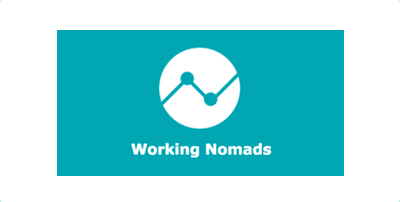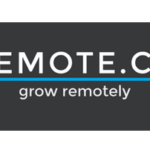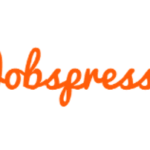Picture this: It’s a crisp April morning in 2025, and I’m sipping coffee on my balcony in Seattle, laptop open, ready to dive into my workday. No commute. No stuffy office. Just me, my Wi-Fi, and a view of Puget Sound. Sound like a dream? It’s not—it’s my reality as a working nomad. And guess what? It could be yours too. Remote work has exploded, and 2025 is the year to find your dream work-from-home job. Let’s talk about how to make that happen—grab a snack, because we’re diving deep.
Why Work from Home in 2025? (Spoiler: It’s Awesome)
Why go remote? Well, for starters, it’s the ultimate middle finger to rush-hour traffic. I used to spend an hour each way commuting to an office—two hours of my life, gone, every single day. Now? I roll out of bed, maybe do a quick yoga stretch (or, let’s be honest, scroll X for 10 minutes), and I’m at my desk. That’s time saved, sanity preserved.
Remote work in 2025 isn’t just about ditching the commute, though. It’s about flexibility. Want to take a midday walk? Go for it. Need to pick up your kid from school? No problem. You’re in control. Plus, you save money—no gas, no overpriced downtown lunches, no dry-cleaning bills for those “business casual” outfits. I once calculated I was spending $200 a month on coffee runs and parking. Insane, right?
The tech’s gotten better too. Back in 2020, Zoom calls were a glitchy nightmare. Now, in 2025, we’ve got crystal-clear video, AI-powered transcription, and collaboration tools like Slack and Trello that make remote teams feel tighter than ever. Companies are hiring globally too—your boss could be in London while you’re chilling in Lisbon. And don’t let anyone tell you remote work kills productivity or career growth. I’ve landed promotions and networked with industry folks on X, all from my home office (aka my couch).
But—is it too good to be true? Some folks think remote work means slacking off in pajamas all day. Nope. It’s work, just without the fluorescent lights and watercooler small talk. You’ve gotta be disciplined, but that’s a small price to pay for freedom.
Where the Jobs Are: Industries and Roles to Watch
So, where are these dream remote jobs? Everywhere. Tech’s still king—software developers, UX designers, and data analysts are in high demand. I know a guy, Mike, who codes for a San Francisco startup from his cabin in Montana. He says the only downside is his dog occasionally photobomping his Zoom calls. Fair trade, if you ask me.
Marketing’s another hot spot. Content writers, social media managers, and SEO specialists are thriving remotely. I dabbled in freelance copywriting last year, and let me tell you, crafting snappy ad copy while sipping tea in my backyard felt like cheating. Customer support’s huge too—think virtual assistants or tech support reps. Even education’s gone remote, with online tutors and course creators raking it in.
What’s new in 2025? AI-driven roles are popping off. Prompt engineers, AI ethicists, and machine learning trainers are carving out space in the remote world. Sustainability’s big too—consultants helping companies go green can work from anywhere. Want specifics? Here’s a quick hit list:
-
Tech: Full-stack developer, cybersecurity analyst, cloud architect.
-
Marketing: Digital strategist, email marketer, influencer manager.
-
Emerging: AI content curator, virtual reality trainer, blockchain consultant.
The best part? You don’t need a PhD or 10 years of experience. Many roles value skills over degrees. I taught myself basic Python during a slow freelance month, and it opened doors to gigs I never expected.
Hunting Down That Dream Gig
Okay, you’re sold. But where do you find these jobs? The internet’s your oyster. Platforms like We Work Remotely and FlexJobs are goldmines for remote listings. LinkedIn’s great too—just filter for “remote” and polish your profile. And don’t sleep on X. I’ve seen hiring managers post job openings there in real-time, and you can slide into their DMs to stand out. (Pro tip: Keep it professional, not “Yo, hire me!”)
Here’s a story: Last summer, I was scrolling X and saw a startup looking for a remote project manager. I replied with a quick pitch, linked my portfolio, and boom—landed an interview. Didn’t get the gig (ouch), but the feedback helped me tweak my approach. Lesson? Put yourself out there.
One big caveat: Watch out for scams. If a job sounds too good to be true (like “Earn $10K a month stuffing envelopes!”), it probably is. Stick to reputable platforms, and never pay to apply for a job. Been there, almost fell for a sketchy “data entry” gig in my early freelancing days. Dodged a bullet.
Nailing the Application (Without Breaking a Sweat)
Applying for remote jobs isn’t like applying for traditional ones. Your resume’s gotta scream “I’m a self-starter who won’t binge Netflix on company time.” Highlight skills like time management, communication, and tech-savviness. I once added a bullet about how I coordinated a 12-person remote team across three time zones. It was a small freelance project, but it caught the hiring manager’s eye.
Your cover letter? Make it personal. Mention why you love remote work. I wrote one that started with a story about how working from home let me care for my sick cat while still hitting deadlines. It showed I’m human, not just a list of skills.
Online presence matters too. Employers will Google you, so clean up that ancient MySpace page (kidding… or am I?). Build a LinkedIn profile that pops, and consider a simple portfolio site. I threw one together using Wix in a weekend—nothing fancy, just my work samples and a bio. Oh, and X can be your secret weapon. Post about your industry, share insights, and engage with companies you admire. It’s like networking without the awkward small talk.
Virtual interviews? They’re a vibe. Test your tech first—nobody wants to hear “Can you hear me now?” for 10 minutes. Set up in a quiet, well-lit space. I learned this the hard way when my neighbor decided to mow his lawn mid-interview. And show you’re remote-ready: Mention your home office setup or how you stay productive. Confidence is key.
Skills and Tools to Crush It
What does it take to thrive as a working nomad? Discipline, for one. You’re your own boss in a lot of ways, so you need to set boundaries. I use the Pomodoro technique—25 minutes of focused work, 5-minute break. Keeps me sane. Communication’s huge too. Remote teams rely on clear emails, Slack messages, and video calls. If you’re vague or ghost people, you’re toast.
Tech skills are non-negotiable. You don’t need to be a coder, but knowing your way around Google Suite, Zoom, or Asana is a must. I picked up Trello for project management after a client raved about it, and it’s been a game-changer. Here’s a quick rundown of tools I swear by:
-
Communication: Slack, Zoom, Microsoft Teams.
-
Productivity: Trello, Notion, Google Calendar.
-
Security: A good VPN (I use NordVPN) to keep your data safe.
Upskilling’s a big deal too. Platforms like Coursera and Udemy have courses on everything from digital marketing to AI basics. I took a $20 course on SEO last year and doubled my freelance rates within months. Invest in yourself—it pays off.
The Not-So-Glam Side (And How to Deal)
Remote work isn’t all sunshine and coffee breaks. It can be lonely. I went a whole week last winter without leaving my apartment, just me and my laptop. Not healthy. Combat isolation by joining online communities—think Slack groups or X threads for remote workers. I’m in a coworking Discord where we chat and share memes. It’s like a virtual watercooler.
Distractions are another beast. Kids, pets, that pile of laundry staring at you—it’s real. I set up a dedicated workspace in my spare room, door closed, noise-canceling headphones on. Burnout’s a risk too. I hit a wall last year, working 12-hour days to impress a client. Bad move. Now I cap my hours and take weekends off. You’re not a machine, so don’t act like one.
How do you stay motivated? Routine helps. I start my day with a quick journal session—goals, gratitude, that kind of thing. Sounds cheesy, but it works. And find your people. I have a buddy, Sarah, who’s also a remote worker. We do weekly check-ins to vent and swap tips. Keeps us grounded.
Real Stories, Real Nomads
Let’s talk about some folks killing it as working nomads. There’s Priya, a graphic designer I met on X. She left a toxic office job in 2023 and now freelances for clients worldwide from her apartment in Mumbai. She says the freedom to set her own hours lets her pursue her passion for painting. Then there’s Carlos, a customer support lead for a tech company. He works from a beachside café in Costa Rica, surfing during lunch breaks. Jealous? Me too.
My favorite story is my own (indulge me). Two years ago, I was stuck in a soul-sucking cubicle job. I stumbled into remote freelancing after a friend needed help with a website. One gig led to another, and now I’m a full-time content strategist, working with clients from New York to Singapore. I’m not rich, but I’m happy. And I get to pet my cat during meetings. Win.
Your Turn: Make 2025 Your Year
Here’s the deal: The remote work wave isn’t slowing down. In 2025, companies are desperate for talented people who can deliver from anywhere. You don’t need to be a tech genius or a corporate hotshot. You just need skills, hustle, and a decent internet connection. So, what’s stopping you? Dust off that resume. Browse We Work Remotely. Tweet about your expertise on X. Your dream job’s out there, waiting.
Still nervous? That’s okay. I was too. My first remote gig felt like jumping off a cliff. But I landed, and you will too. Start small—maybe a part-time freelance project. Build from there. The working nomad life isn’t perfect, but it’s pretty darn close. Imagine working from a cozy cabin, a bustling city, or your childhood bedroom. It’s not a fantasy—it’s 2025.
Let’s Keep the Convo Going
What’s your take? Are you already a working nomad, or just dipping your toes in? Drop a comment below or hit me up on X—I’d love to hear your story. And if you’re ready to dive in, check out my free guide, “Top 10 Remote Job Boards for 2025,” linked at the bottom. Let’s make work work for you.










